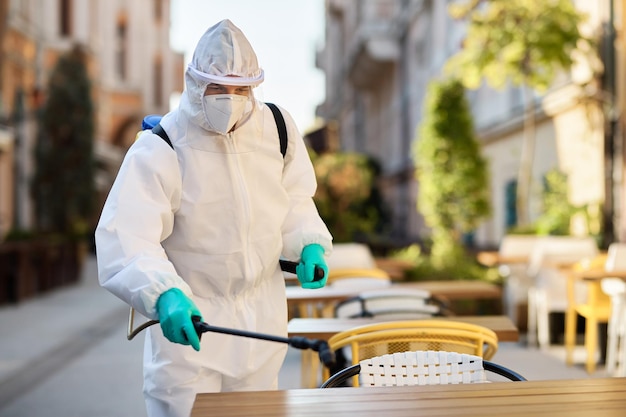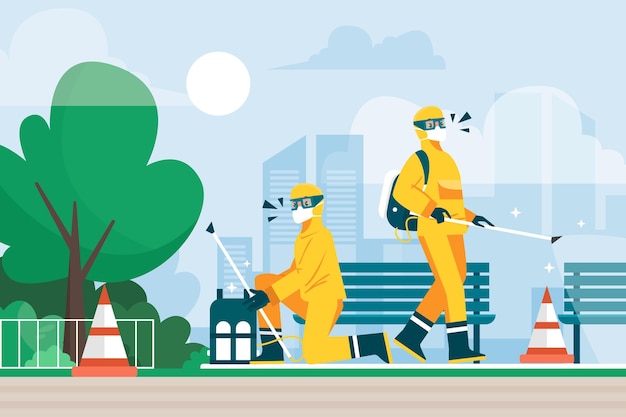
How Eco-Friendly Integrated Pest Management Minimizes the Environmental Impact in Cities
By Marie Nieves
There are many vibrant cities with diverse ecosystems to be found on this planet. They are usually not just a haven for humans but also for various pests.
These rather unwelcome inhabitants range from the microscopic to the more visibly bothersome creatures that find the city’s homes and businesses perfect as their habitats.
Especially in crowded areas, effective strategies for dealing with them are crucial for maintaining a healthy and safe environment.
Fortunately, the pest management industry has seen a significant shift towards eco-friendly methods.
This trend is driven by increasing environmental concerns and the desire for safer alternatives to traditional chemical pesticides.
Homeowners, businesses, and property managers are now prioritizing solutions that are not only effective against pests but also minimize harm to the environment, pets, and humans.
The rise of eco-friendly pest control represents a response to the broader movement towards sustainability and health-conscious living, aligning pest management practices with the values of a modern, environmentally aware society.
The Importance of Sustainable Pest Management in Cities
 Pest control is essential for maintaining a healthy and safe living environment. Pests like rodents, insects, and other unwanted creatures can pose serious health risks, damage property, and lead to significant discomfort.
Pest control is essential for maintaining a healthy and safe living environment. Pests like rodents, insects, and other unwanted creatures can pose serious health risks, damage property, and lead to significant discomfort.
However, traditional pest control methods often rely on chemical pesticides that can harm the environment and health.
The Role of Integrated Pest Management (IPM) in Cities
Integrated Pest Management (IPM) plays a pivotal role in eco-friendly pest control.
IPM is a sustainable approach that combines multiple strategies to manage pests effectively with minimal environmental impact.
It emphasizes the importance of understanding the life cycle of pests and their interaction with the environment to choose the most appropriate control methods.
This approach may include biological control, habitat manipulation, and the use of resistant varieties alongside chemical controls that are safer for the environment.
By focusing on long-term prevention of pests and their damage through a combination of techniques, IPM aims to reduce the reliance on chemical pesticides, thereby protecting ecosystems and reducing pollution.
Advantages of Eco-Friendly Pest Management in Cities
Sustainable methods often provide safer alternatives for humans and pets, reducing the exposure to harmful chemicals typically associated with traditional pest control.
Eco-friendly practices can also lead to better long-term pest management outcomes by focusing on prevention and the use of non-toxic methods that do not contribute to the development of pesticide resistance in pests.
Moreover, these practices can enhance biodiversity by preserving beneficial insects and other non-target species that play essential roles in ecosystems.
Adopting eco-friendly pest management reflects a commitment to sustainability and responsible stewardship of the environment.
Embracing the Eco-Friendly Approach in Urban Pest Management
The shift towards eco-friendly pest management is becoming increasingly important in today’s environmentally conscious society.
Traditional pest management methods, while effective in controlling unwanted pests, often come with significant drawbacks, including potential health risks to humans and pets, as well as adverse effects on the environment.
Eco-friendly pest control, however, offers a sustainable and safer alternative, focusing on natural and less toxic methods to manage pest populations.
Environmental and Health Benefits
One of the primary benefits of eco-friendly pest control is its reduced impact on the environment.
Traditional chemical pesticides can contaminate our food sources, water supplies, and soil, posing risks to wildlife and human health.
Organic pest control methods on the other hand, utilize naturally derived pesticides and strategies like prevention and exclusion, significantly lowering the carbon footprint associated with pest control efforts.
Furthermore, these methods are less likely to harm landscaping and do not contribute to pesticide resistance, which can be a problem with chemical treatments.
Eco-friendly pest management also prioritizes human and animal safety by reducing exposure to toxic chemicals.
This approach is not only more humane but also more convenient, as it often requires less preparation and cleanup compared to traditional methods.
Integrated Pest Management (IPM) strategies play a crucial role in eco-friendly pest control, emphasizing prevention, exclusion, and minimal use of non-toxic treatments to manage pests effectively.
Long-Term Effectiveness and Cost Savings
The long-term environmental benefits of eco-friendly pest management are significant.
By relying on natural elements and preventative measures, these methods help maintain the natural balance of ecosystems, protecting beneficial insects and reducing the likelihood of future infestations.
This approach not only preserves biodiversity but is also cost-effective in the long run, as it minimizes the need for expensive chemical treatments and mitigates the environmental damage that can lead to further pest control issues.
Moreover, eco-friendly pest management methods are designed to be sustainable, ensuring that treatments remain effective over time without causing harm to the environment or human health.
This is in stark contrast to traditional pest control methods, which can lead to the development of pesticide-resistant pest populations and require increasingly potent chemicals to maintain effectiveness.
A Call To Action
The importance of adopting eco-friendly pest control methods cannot be overstated.
As awareness grows about the negative impacts of chemical pesticides on our health and the environment, more homeowners, businesses, and pest control professionals are turning to safer, more sustainable alternatives.
By choosing eco-friendly pest management, we can protect our planet for future generations while ensuring our homes and communities remain safe and pest-free.
The movement towards eco-friendly pest control reflects a broader trend of environmental stewardship and sustainable living.
As we continue to learn about the interconnectedness of human health and the environment, it becomes increasingly clear that the choices we make in pest management have far-reaching consequences.
Embracing eco-friendly pest control is a smart, responsible step toward a healthier, more sustainable future.
Final Remarks
The transition towards eco-friendly pest management in cities marks a pivotal moment in our collective journey toward sustainability and health-conscious living. As we become more aware of the environmental and health risks associated with traditional chemical pesticides, the demand for greener, safer pest management solutions has never been higher.
This movement not only showcases our growing commitment to protecting the planet but also to ensuring the well-being of our families, pets, and the natural world around us. By embracing eco-friendly pest management methods, we are taking a crucial step towards a more sustainable future, demonstrating that it is possible to live in harmony with nature without compromising on the effectiveness of pest management strategies.
This trend is a testament to the power of innovation and the importance of environmental stewardship, urging us all to consider the impact of our choices and to opt for practices that support a healthier, more sustainable world.
Author bio: Marie Nieves is a passionate blogger with an eye for design, a flair for storytelling, and a love for culture. She contributes regularly to various blogs and online magazines, all while satisfying her wanderlust by exploring states and countries near and far.